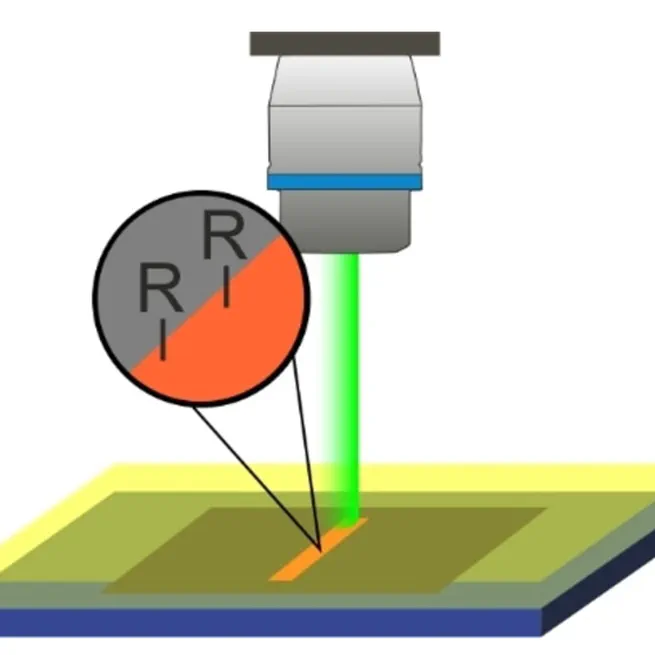
Abstract The emerging laser writing represents an efficient and promising strategy for covalent two dimensional (2D)-patterning of graphene yet remains a challenging task due to the lack of applicable reagents. Here, we report a versatile approach for covalent laser patterning of graphene using a family of trivalent organic iodine compounds as effective reagents, allowing for the engraving of a library of functionalities onto the graphene surface. The relatively weak iodine-centered bonds within these compounds can readily undergo laser-induced cleavage to in situ generate radicals localized to the irradiated regions for graphene binding, thus completing the covalent 2D-structuring of this 2D-film. The tailor-made attachment of distinct functional moieties with varying electrical properties as well as their thermally reversible binding manner enables programming the surface properties of graphene. With this delicate strategy the bottleneck of a limited scope of functional groups patterned onto the graphene surface upon laser writing is tackled.
Oct 14, 2024
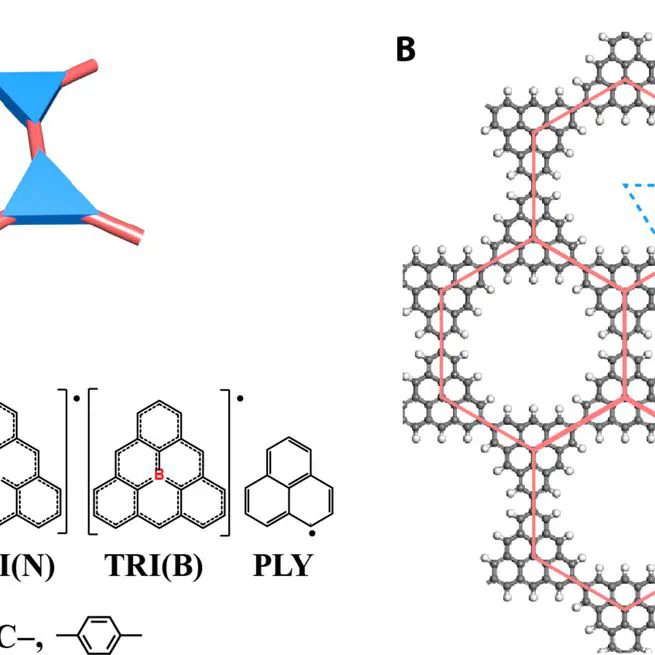
We predicted, for the first time, the emergence of Stoner-ferromagnetic half-metals, as well as antiferromagnetic Mott-Hubbard insulators in metal-free 2D polymers.
Oct 2, 2024
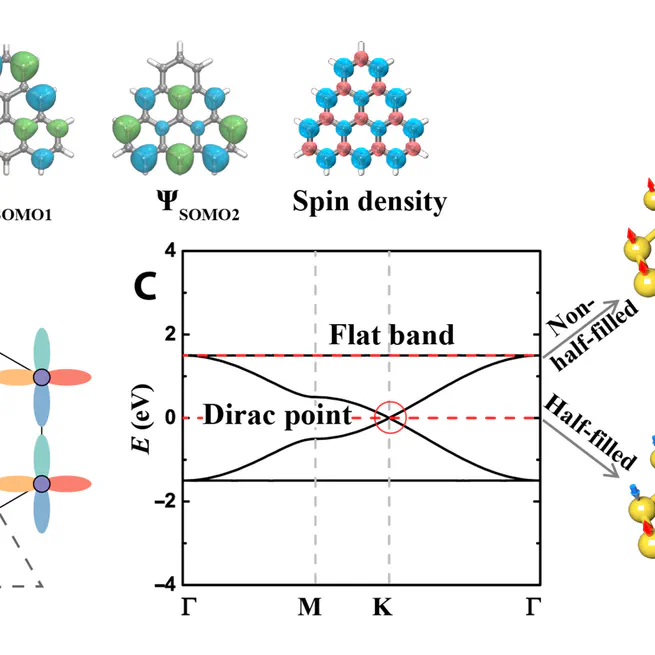
We predicted, for the first time, the emergence of Stoner-ferromagnetic half-metals, as well as antiferromagnetic Mott-Hubbard insulators in metal-free 2D polymers.
Oct 2, 2024
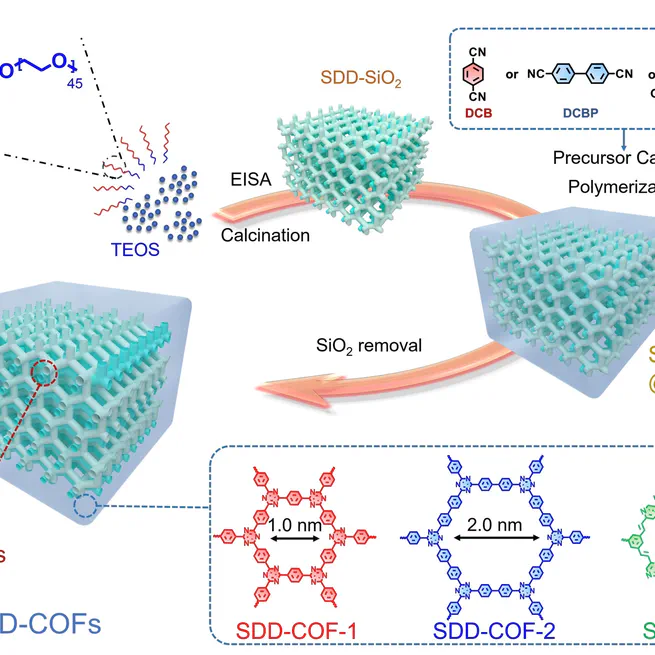
Abstract Introducing continuous mesochannels into covalent organic frameworks (COFs) to increase the accessibility of their inner active sites has remained a major challenge. Here, we report the synthesis of COFs with an ordered bicontinuous mesostructure, via a block copolymer self-assembly-guided nanocasting strategy. Three different mesostructured COFs are synthesized, including two covalent triazine frameworks and one vinylene-linked COF. The new materials are endowed with a hierarchical meso/microporous architecture, in which the mesochannels exhibit an ordered shifted double diamond (SDD) topology. The hierarchically porous structure can enable efficient hole-electron separation and smooth mass transport to the deep internal of the COFs and consequently high accessibility of their active catalytic sites. Benefiting from this hierarchical structure, these COFs exhibit excellent performance in visible-light-driven catalytic NO removal with a high conversion percentage of up to 51.4 %, placing them one of the top reported NO-elimination photocatalysts. This study represents the first case of introducing a bicontinuous structure into COFs, which opens a new avenue for the synthesis of hierarchically porous COFs and for increasing the utilization degree of their internal active sites.
Feb 14, 2024
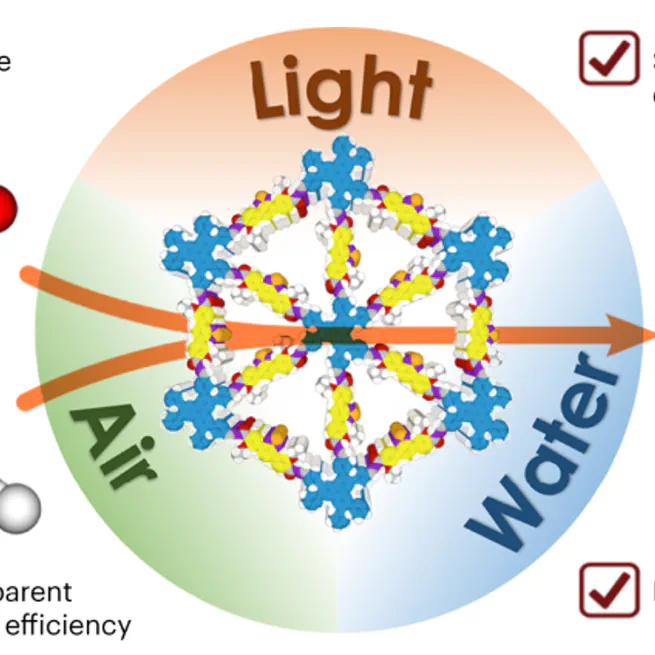
Abstract Charge transfer and mass transport to catalytic sites are critical factors in photocatalysis. However, achieving both simultaneously is challenging due to inherent trade-offs and interdependencies. Here we develop a microporous covalent organic framework featuring dense donor–acceptor lattices with engineered linkages. The donor–acceptor columnar π-arrays function as charge supply chains and as abundant water oxidation and oxygen reduction centres, while the one-dimensional microporous channels lined with rationally integrated oxygen atoms function as aligned conduits for instant water and oxygen delivery to the catalytic sites. This porous catalyst promotes photosynthesis with water and air to produce H2O2, combining a high production rate, efficiency and turnover frequency. This framework operates under visible light without the need of metal co-catalysts and sacrificial reagents, exhibits an apparent quantum efficiency of 17.5% at 420 nm in batch reactors and enables continuous, stable and clean H2O2 production in flow reactors.
Feb 13, 2024
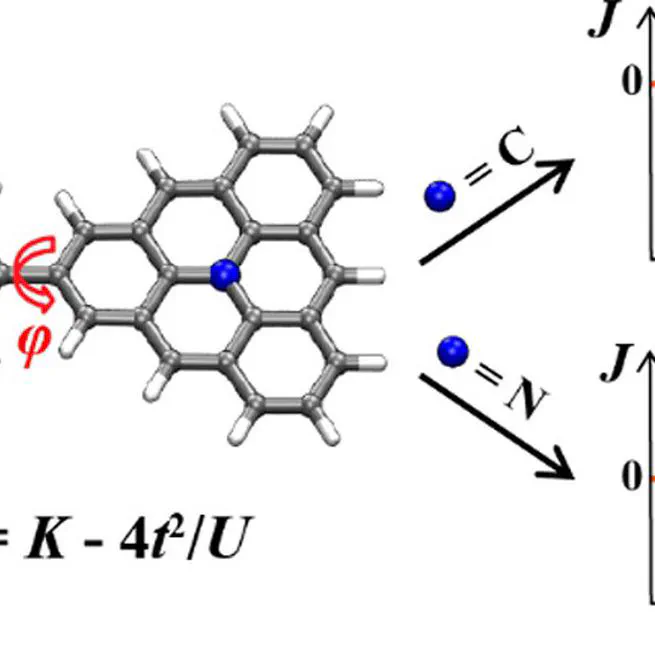
We present an effective approach to control the magnetic couplings in triangulene dimers. We investigated 24 triangulene dimers and achieved unprecedented strong J values up to -144 meV. Many of our predictions have been experimentally verified. We show the first example of ferromagnetic triangulene dimers that is beyond Lieb's theorem's predictive power.
Aug 23, 2023
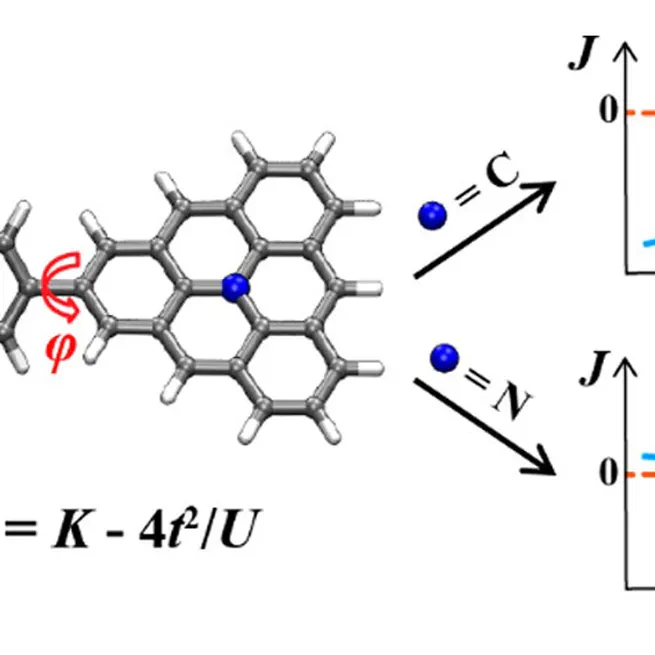
We present an effective approach to control the magnetic couplings in triangulene dimers. We investigated 24 triangulene dimers and achieved unprecedented strong J values up to -144 meV. Many of our predictions have been experimentally verified. We show the first example of ferromagnetic triangulene dimers that is beyond Lieb's theorem's predictive power.
Aug 23, 2023
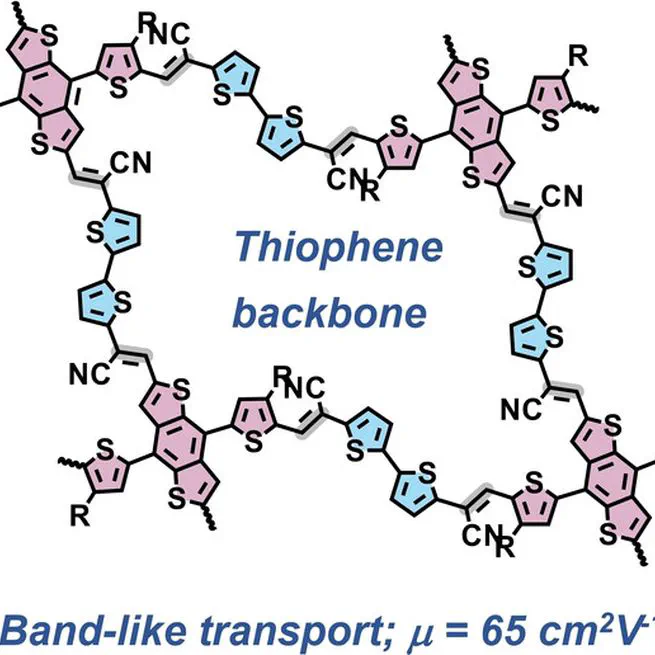
Abstract Linear conjugated polymers have attracted significant attention in organic electronics in recent decades. However, despite intrachain π-delocalization, interchain hopping is their transport bottleneck. In contrast, two-dimensional (2D) conjugated polymers, as represented by 2D π-conjugated covalent organic frameworks (2D c-COFs), can provide multiple conjugated strands to enhance the delocalization of charge carriers in space. Herein, we demonstrate the first example of thiophene-based 2D poly(arylene vinylene)s (PAVs, 2DPAV-BDT-BT and 2DPAV-BDT-BP, BDT=benzodithiophene, BT=bithiophene, BP=biphenyl) via Knoevenagel polycondensation. Compared with 2DPAV-BDT-BP, the fully thiophene-based 2DPAV-BDT-BT exhibits enhanced planarity and π-delocalization with a small band gap (1.62 eV) and large electronic band dispersion, as revealed by the optical absorption and density functional calculations. Remarkably, temperature-dependent terahertz spectroscopy discloses a unique band-like transport and outstanding room-temperature charge mobility for 2DPAV-BDT-BT (65 cm2 V−1 s−1), which far exceeds that of the linear PAVs, 2DPAV-BDT-BP, and the reported 2D c-COFs in the powder form. This work highlights the great potential of thiophene-based 2D PAVs as candidates for high-performance opto-electronics.
Jun 4, 2023
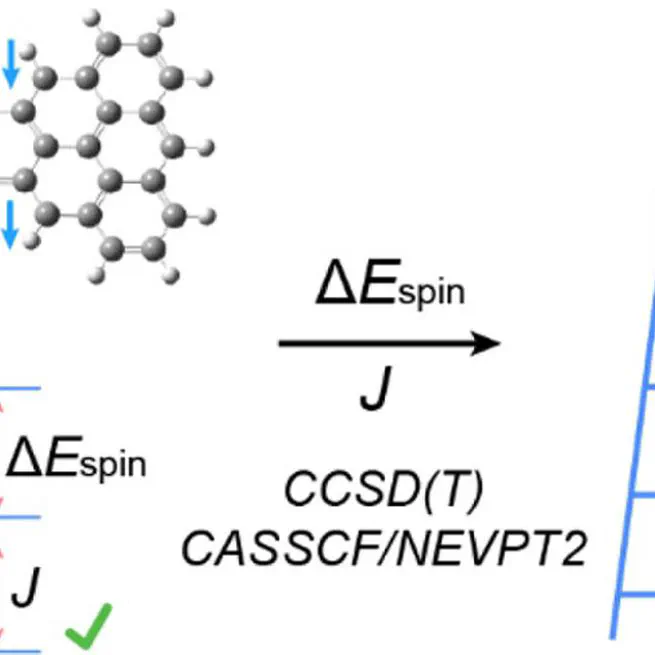
We developed a benchmark dataset comprising 25 magnetic systems with nonlocal spin densities, including triangulene monomers, dimers, and their analogues. This work highlighted the importance of the choice of DFT functional.
Jun 1, 2023
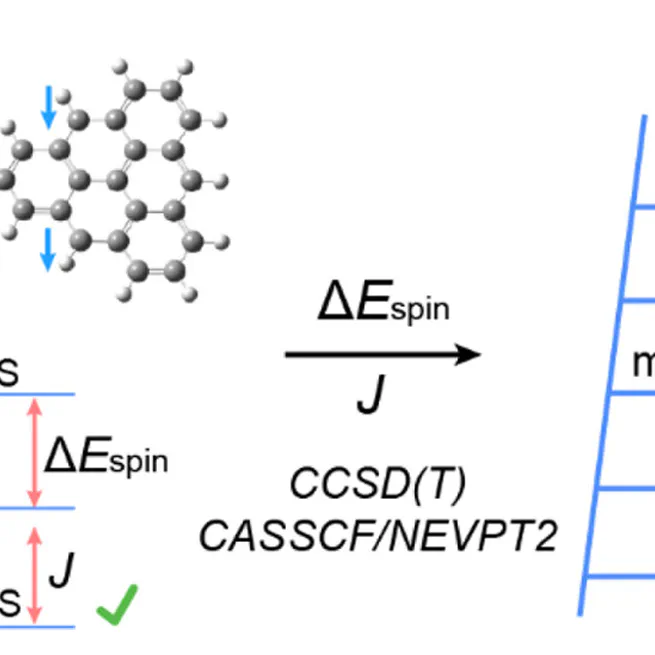
We developed a benchmark dataset comprising 25 magnetic systems with nonlocal spin densities, including triangulene monomers, dimers, and their analogues. This work highlighted the importance of the choice of DFT functional.
Jun 1, 2023